Reverse Osmosis Filtration
WHAT IS REVERSE OSMOSIS (RO) FILTRATION?
Reverse osmosis (RO) filters water by pressing it against a semipermeable membrane that allows only water molecules enter, but halts minerals, trace elements, and other elements. Pure, raw water is produced.
WHY IS RO-FILTERED WATER IMPORTANT FOR MY DISCUS?
Discus are very sensitive to their water. They flourish only when they are in pristine water that doesn’t have any harmful chemicals hindering their growth. RO filters purify and soften tap water so that only water molecules remain. As discus need acidic water, soft water is useful. Pure water is also important for the sensitive discus.
HOW DO I OBTAIN RO-FILTERED WATER?
You can use an RO filter or buy RO-filtered water for cheap prices at a water store. Many cities and towns have local water stores.
HOW DO AQUARIUM FILTERS WORK, AND HOW ARE THEY RELATED TO THE USE OF RO?
Discus and their food naturally produce ammonia, which is toxic to discus. Biological filters have bacteria that eat ammonia and produce nitrites, which are also toxic to discus. Biological filters also have more bacteria that eat the nitrites and produce nitrates. Nitrates are not as toxic to discus as ammonia and nitrites are, but they can still cause problems when highly concentrated in your tank. You can easily remove nitrates by changing your tank’s water. When you change your aquarium’s water, that is when the RO filter’s role comes in.
HOW DOES AN RO FILTER WORK?
Basically, the water flows different filters that will remove any impurities and leave you with pure, raw water.
- First, you pour the water into the RO filter, and its entryway is a small micron pre-filter that blocks small particles, cysts, spores, bacteria, and grains of sand from entering.
- Next, the water flows through a carbon pre-filter that will block chlorine, toxins, chemical impurities, and any pipe cleaning additives.
- The water flows through the membrane that allows only water molecules to pass through.
WHAT TYPES OF COMPONENTS SHOULD I MAKE SURE MY FILTER INCLUDES?
A high quality carbon block.
The highest quality ones remove chloramines, a mix of chlorine and ammonia that is often in tap water. Osmotic reverse osmotic filters use high quality components, including superior carbon blocks.
A TFC membrane approved by the FDA and certified by the NSF.
Many different membranes are available. Thin film composite (TFC) membranes are an excellent choice. They are appropriate for well water or city tap water. Since chlorine can damage TFC membranes, be sure that your carbon pre-filter is high quality. A good carbon pre-filter will prevent chlorine from contacting the TFC membrane.
Although cellulose triacetate (CTA) membranes can tolerate chlorine, they are more expensive, less efficient, and unnecessary. Instead of a CTA membrane, just use a TFC membrane with an effective carbon block.
The highest quality membranes approved by the FDA for drinking use and certified by the NSF.
WHY IS PURE WATER IMPORTANT FOR MY DISCUS?
Impurities (such as phosphates), nitrates, and silicates have been removed. Many of these impurities could have fostered algae and dangerous bacteria.
Pure water also means that beneficial trace elements and minerals have also been removed. Fortunately, you can reconstitute the water after RO filtration to replace these materials.
WHY SHOULD I RECONSTITUTE THE RO WATER?
The RO system removes trace elements and minerals that benefit discus. You can reconstitute the water to bring these elements back. Increasing the concentration of these particles means that you are making the water harder. Water with a lower concentration of trace particles and minerals is softer, and water with a higher concentration of trace particles and minerals is harder.
HOW DO I RECONSTITUTE MY RO WATER?
Option 1: Use commercial products.
You can use commercial products that will reconstitute your water so that it reaches the correct level of hardness. This option is easy, and you can use it in any situation. Make sure to use this option when breeding discus.
Option 2: Use filtered tap water.
Your second option is that you can use filtered tap water to reconstitute your water. Make sure that you have filtered your tap water first through carbon filtration, which removes chlorine and other harmful chemicals. Next, carefully blend the RO water with your tap water until the correct hardness is reached. You’ll get softer water with a more acidic pH. Now the water changing process is easy: Simply add the correct amount of RO water to your tank, and then add the filtered tap water. Don’t use this option when breeding discus. You can, however, use it when normally keeping discus.
HOW SHOULD I STORE MY RO WATER?
You should store it in a food grade drum, RO drinking water tank, or food grade water container. Use a storage unit that has been approved as food grade, since food grade materials won’t have harmful chemicals. Some people want to store their RO water in other containers, such as trash cans, but these often have harmful chemicals or mildew retardants. Your storage unit should receive constant aeration, and heat should be provided.
HOW SHOULD I TRANSPORT MY RO WATER?
Use clear poly tubing. You can easily clean it periodically by submerging it into a container with hydrogen peroxide for a few hours.
Clear Poly Tubing
Since garden hoses often contain dangerous chemicals, never use them.
WHEN SHOULD I REPLACE THE COMPONENTS?
This depends on your water conditions and how frequently you use your RO sytem. Generally, replace the sediment pre-filter cartridge ever four months. Once it looks discolored, you know it needs to be replaced. Also, replace the carbon filter around every six months.
QUESTIONS
- Why is RO filtration useful?
- How does RO filtration work?
- Why is it important that you reconstitute water for discus after it flows through the RO filter?
- Why is a high quality carbon block so important?
Share this post
Leave a Reply
You must be logged in to post a comment.

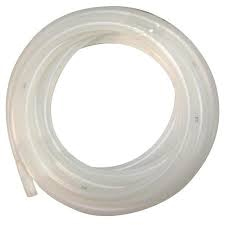

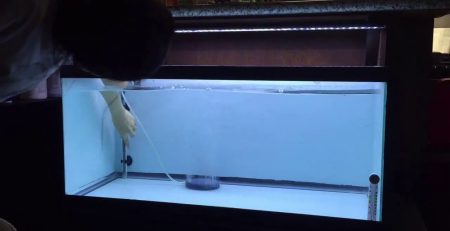
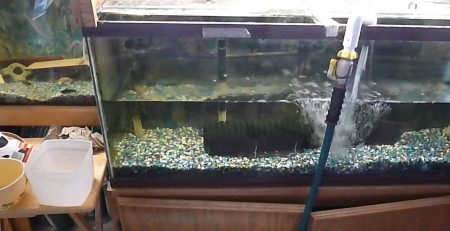
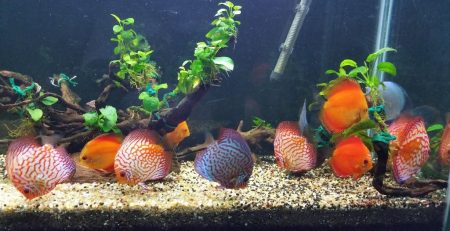
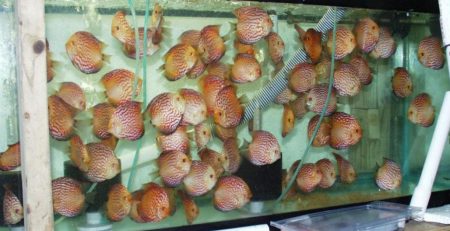
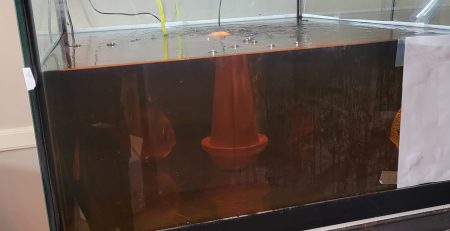
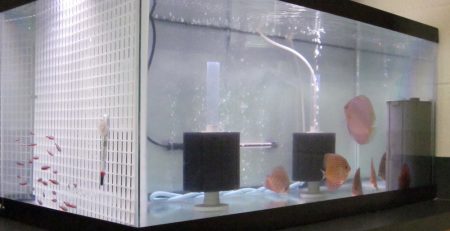
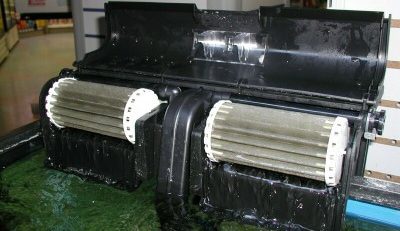

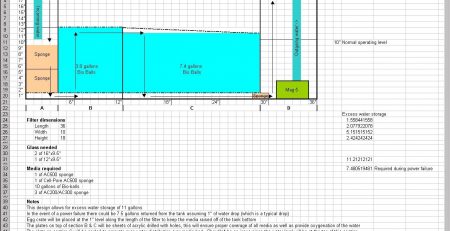
Reviews by Actual Customer Purchasers of this Product: